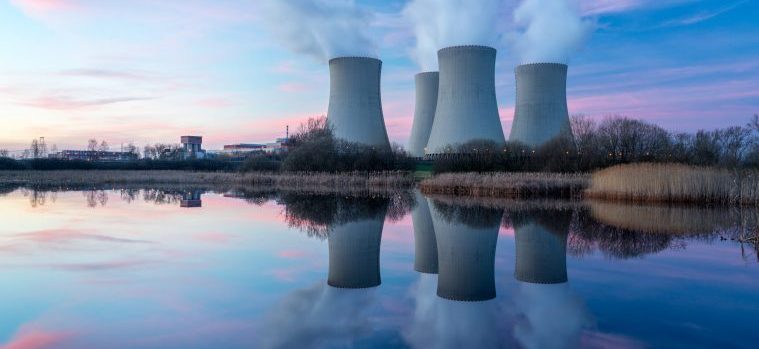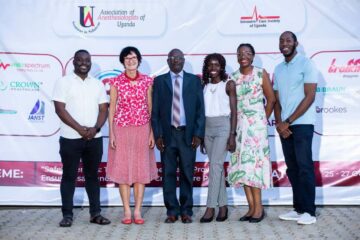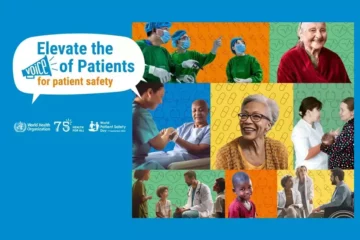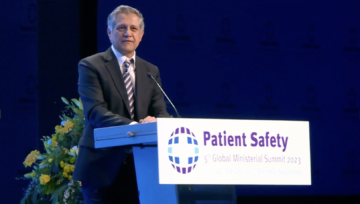The following provides the perspective of someone with more than five decades working with nuclear power, and is intended to share experience that might be helpful in improving patient safety. The author has had a military career operating nuclear submarines; another as an executive with an organization dedicated to improving the safety of all U.S. commercial nuclear power plants; and a third career as a safety consultant, serving on multiple nuclear safety oversight boards. He has also coached hospital caregivers in applying techniques for improving safety performance, and authored two books, The Observant Eye, Using it to Understand and Improve Performance, and The War on Error – A Hospital Field Manual.
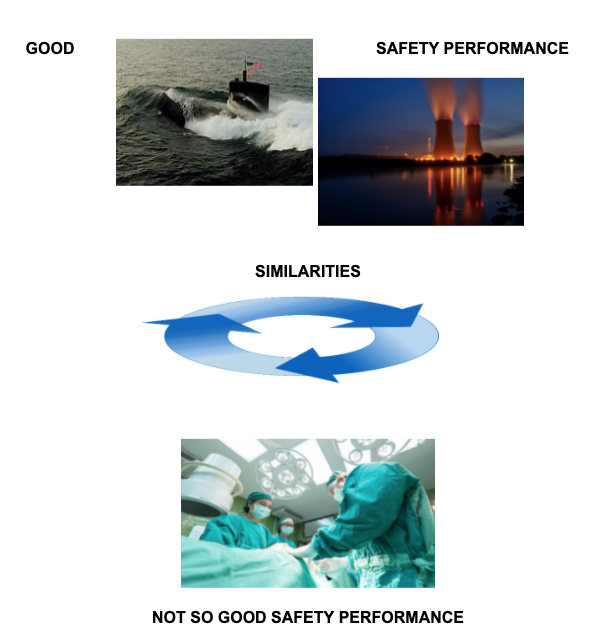
Nuclear engineer: Why is it called caregiving when it kills so many people?
The number of deaths caused by improperly administered healthcare is staggering. Across the globe, more than 8,000 people die in hospitals every day, and they die in ways that often could have been prevented. Estimates are that medical errors cause as many as 400,000 deaths in the United States annually. These medical errors are one of the top three causes of death in this country. And this is called caregiving?
If the errors can be stopped, why haven’t they been?
In light of this carnage, which arguably often results from the caregiver environment, to a non-healthcare professional, a term like “caregiving” seems ill-suited. But more important than the validity of a word are the errors and deaths that bring the word into question. What can we do about these errors? The genesis of the answer to this question may lie in submarines.
Is the quality of caregivers reflected in the statistics?
After having spent years operating nuclear submarines, where the cost of inattention to safety can be death of the entire crew, and additional years directing, monitoring, and advising on safety matters in civilian nuclear power reactors, I formed the opinion that the performance of those in any non-nuclear occupation, and particularly those in healthcare, in terms of knowledge, professionalism, and dedication, could never measure up to the high levels of performance of those in the nuclear field, either civilian or military. This opinion was reinforced by the medical error rates noted above.
I was wrong
In the course of one of my careers, as a safety consultant, I had the opportunity to work with numerous nurses in a number of large hospitals. I found these nurses to be of at least, and often exceeding, the high caliber I had become accustomed to in the nuclear field. The work they did and the caring and compassion they exhibited clearly warranted the title of caregiver.
Nuclear Industry vs Healthcare
If the quality of personnel in the nuclear industry and in healthcare is equally high, why then are the safety performance records of the two industries so markedly different? The aspirations for safety, be it nuclear safety, personnel safety, or patient safety, exist in both industries, but in healthcare there is a yawning gulf between aspirations and reality in terms of results. Such a gulf does not exist in the nuclear field.
Unfair you say? Hospitals and nuclear plants are different.
Are they different? In all ways? Are you sure? Consider the following:
- Caregivers do “handoffs”; nuclear technicians do “watch turnovers”. In both, which are transfers of information and responsibility between people, the total and accurate transfer is vital to safety.
- Caregivers deal with controlling the spread of infection; nuclear technicians deal with controlling the spread of radioactive contamination. Neither infection nor contamination can be seen or otherwise sensed, but either can cause considerable physical harm.
- Caregivers need to ensure they are dealing with the right patient; nuclear technicians need to ensure they are dealing with the right plant component, many of which are almost identical to each other. Either working on the wrong patient in a hospital or on the wrong component in a nuclear plant can have deadly results.
- Caregivers frequently communicate important information; nuclear technicians also frequently communicate important information. For the sake of safety, both need to ensure there are no errors in their communications.
- Caregivers have to control materials, such as instruments, to ensure they are not left inside of patients following surgery; nuclear technicians have to control tools to ensure they are not left inside critical plant equipment following maintenance.
The list of similar challenges goes on, and in the case of the nuclear technician, as in the case of the caregiver, human performance errors can lead to devastating results. So, maybe hospitals and nuclear plants are not that different when it comes to human performance and its effect on safety.
Is a nuclear plant really safer than a hospital?
Nuclear performance
Nuclear warriors have accumulated almost 6,000 reactor-years of operation without a reactor accident. These warriors, mostly Submariners, have been steeped in safety from day one in their careers, and much of their approach in submarines was passed on to the commercial nuclear industry following the Three Mile Island nuclear accident. The story of safety and nuclear submarines is for another time, but know that the commercial nuclear industry, after learning from the nuclear warriors, has achieved remarkable records in nuclear safety and incomparable records in industrial safety.
What does industrial safety have to do with patient safety?
It has been shown time and again that you either have a culture of safety or you don’t. You will not find a place that values one type of safety but not another. As OSHA advises, a safe workplace results in a sound business. A sound business is a safe business. Industrial safety and other forms of safety are inextricably linked.
Industrial safety in nuclear
Industrial safety in nuclear is exemplary. Not only is the U.S. nuclear industry’s nuclear safety record impressive, as evidenced by their not having experienced a significant event in more than twenty years, their industrial safety rate is equally impressive. The 2020 report of the U.S. Bureau of Labor Statistics could essentially be an advertisement of the nuclear industry for their personnel safety performance. The recordable accident rate in the nuclear industry is:
- one-tenth of that within other industries in general.
- one-fifteenth that within the passenger air transportation industry
- one-fifth that within fossil power generation.
- even lower than that for bookstores!
Hospital performance
Meanwhile, in the healthcare industry:
- The industrial safety recordable accident rate for general medical and surgical hospitals is more than twenty-five times that of the nuclear industry.
- Hundreds of thousands of deaths occur each year as a result of often preventable medical error.
Why the difference?
There are two key reasons for the difference in safety performance between the healthcare and nuclear industries:
- A good regulator
The Nuclear Regulatory Commission is a highly intrusive and effective regulator. Not only does the regulator ensure the licensee adheres to regulatory requirements for safety, but the existence of government involvement also motivates management to take a more proactive role in fostering safe practices. But for reasons we’ll discuss in another post, regulatory enforcement is not enough. One can imagine that regulations cannot be made to govern every aspect of human performance.
- A focus on watching (literally) human performance
The second and more important element of the answer to the above question is, in a word, “observation”, observation of human performance activities that leads to a culture of attention to detail, of procedure and policy adherence, of thinking before one acts, of communicating clearly – a culture of safety.
Why watch people?
In the nuclear industry, people are observed performing their work, observed, not in an attempt to punish or embarrass, but observed to identify whatever needs to change in order to strive for excellence in safety, practices and conditions that are often well beyond the reach of regulatory requirements. People often do things that increase the likelihood of error without even realizing they are doing them.
Would observation work in a hospital setting?
I, and nurses with whom I’ve worked, have used this method of observation in a number of hospitals. So, I know it works, every bit as well as it does in nuclear.
But is it that simple? Of course not. When you observe, what do you do with what you see? That’s for another post.
So, what can you do to help move healthcare to the levels of safety achieved in the nuclear industry?
There are a number of things one can do. Here are a few:
- Contact your elected representatives and encourage the government to put a higher priority on patient safety. A byproduct of such government attention is greater corporate motivation for improvement.
- Recognize that human performance is a key element in seeking the highest levels of safety, and work to improve it.
- Learn from the nuclear industry. Find out how they maintain a culture of safety; what techniques they use to reduce the likelihood of errors in human performance. Some of these points will be discussed in future posts on this blog.
Any comments or questions regarding this post are encouraged and would be greatly appreciated. They can be sent to [email protected].

